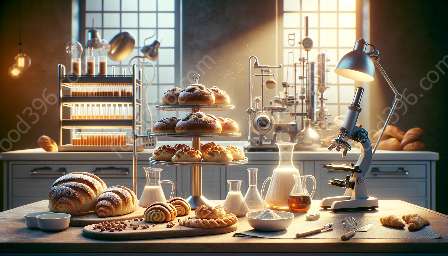Yeast, a microscopic organism, plays a vital role in baking science and technology. Understanding yeast reproduction and growth is essential to mastering the art of baking. This topic cluster explores the fascinating world of yeast, its reproduction, growth, and its crucial role in baking.
Understanding Yeast
Yeast is a single-celled organism belonging to the fungi kingdom. It is widely used in baking to ferment dough, giving bread its airy texture and delectable taste. Yeast reproduces asexually through budding, a process that involves the formation of new cells from the parent cell.
Yeast Reproduction
Yeast reproduction is a remarkable biological process. Under favorable conditions, yeast cells divide and form new cells through budding. During budding, a small outgrowth, known as a bud, develops on the parent cell. The nucleus of the parent cell divides, and one of the nuclei migrates into the bud, which then grows and eventually separates from the parent cell to become an independent yeast cell.
Factors Affecting Yeast Reproduction and Growth
Several factors influence yeast reproduction and growth:
- Temperature: Yeast reproduces most rapidly at temperatures between 75-85°F (24-29°C). Temperatures outside this range can slow down or inhibit yeast reproduction.
- Food Source: Yeast requires a source of food, such as sugars or starches, to fuel its metabolic processes and support growth and reproduction.
- pH Level: Yeast functions optimally in a slightly acidic environment, with a pH range of 4-6.
- Oxygen: While yeast can reproduce anaerobically, oxygen availability can impact its growth and reproductive rate.
Yeast Growth
Yeast growth is influenced by the availability of nutrients, temperature, and environmental conditions. During the growth phase, yeast cells absorb nutrients from their surroundings, metabolize sugars, and multiply rapidly, leading to an increase in yeast biomass.
Yeast and Its Role in Baking
Yeast is a crucial component in the art of baking. It contributes to the leavening process, where carbon dioxide gas is produced through the fermentation of sugars, causing the dough to rise. This results in the light and airy texture of bread and other baked goods. Understanding yeast reproduction and growth is essential for achieving the desired fermentation and rising of baked goods.
Baking Science & Technology
Baking science and technology involve understanding the chemical, physical, and biological processes that occur during baking. Yeast plays a fundamental role in these processes, as it is responsible for the leavening and fermentation of dough, ultimately affecting the texture, flavor, and structure of baked products.
By delving into the intricacies of yeast reproduction, growth, and its application in baking science and technology, bakers and baking enthusiasts gain valuable insights into the factors that influence yeast behavior, which in turn allows for more precise control over the baking process.

